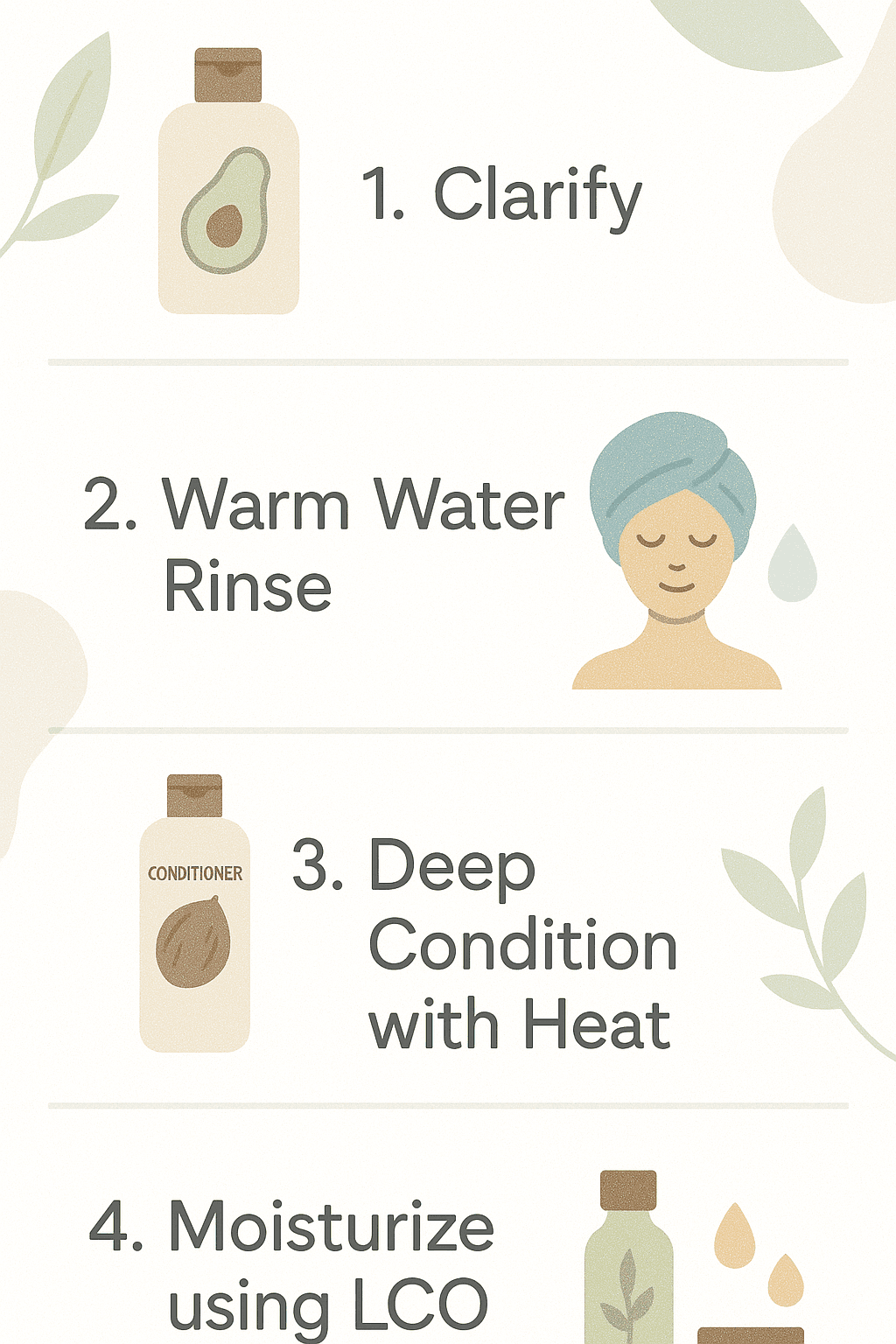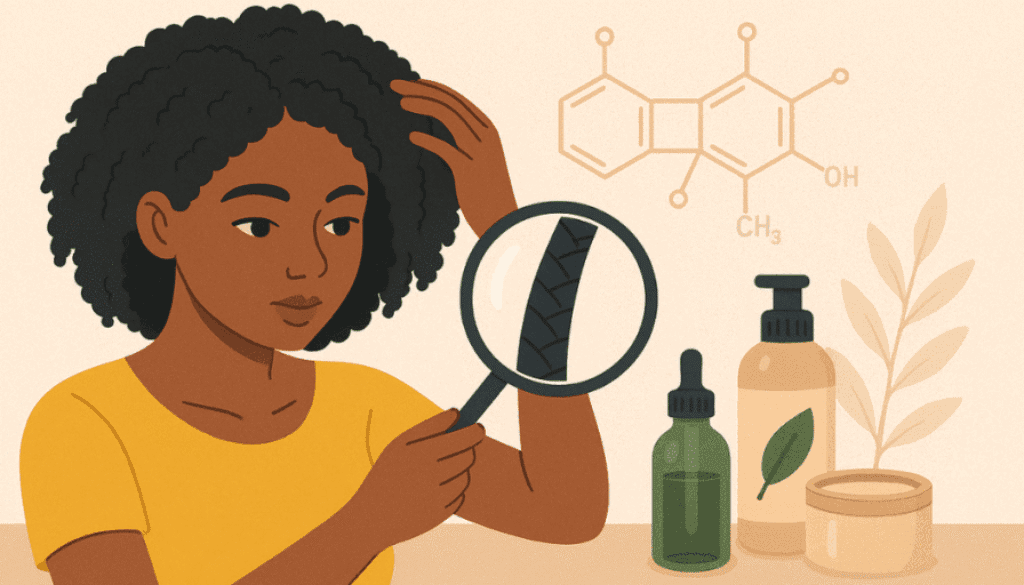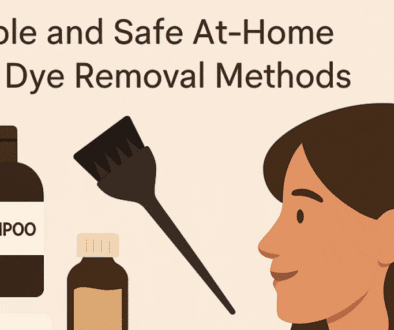Understanding the Science Behind Hair Care for Low Porosity Hair
Discover everything you need to know about caring for low porosity hair in this complete guide! Learn how to identify low porosity hair, overcome common challenges like dryness and product buildup, and create a personalized hair care routine that keeps your strands healthy, soft, and moisturized. From DIY treatments and warm water techniques to the best shampoos, conditioners, and oils, this article covers all the science-backed tips and expert advice you need to help your low porosity hair flourish. Perfect for anyone seeking a deeper understanding of their hair’s unique needs!
What is Low Porosity Hair?
Definition of Hair Porosity
Hair porosity refers to how well your hair absorbs and retains moisture.
There are three types of hair porosity:
1. Low porosity – Hair repels water and products.
2. Medium porosity – Hair absorbs moisture well and maintains balance.
3. High porosity – Hair quickly takes in moisture but loses it just as fast.
Characteristics of Low Porosity Hair
If you have low porosity hair, you might observe the following:
✔️ Water beads up on your hair instead of soaking in.
✔️ Your hair takes a long time to dry.
✔️ Hair products tend to sit on the surface rather than being absorbed.
✔️ Your hair often feels dry even after using conditioner.
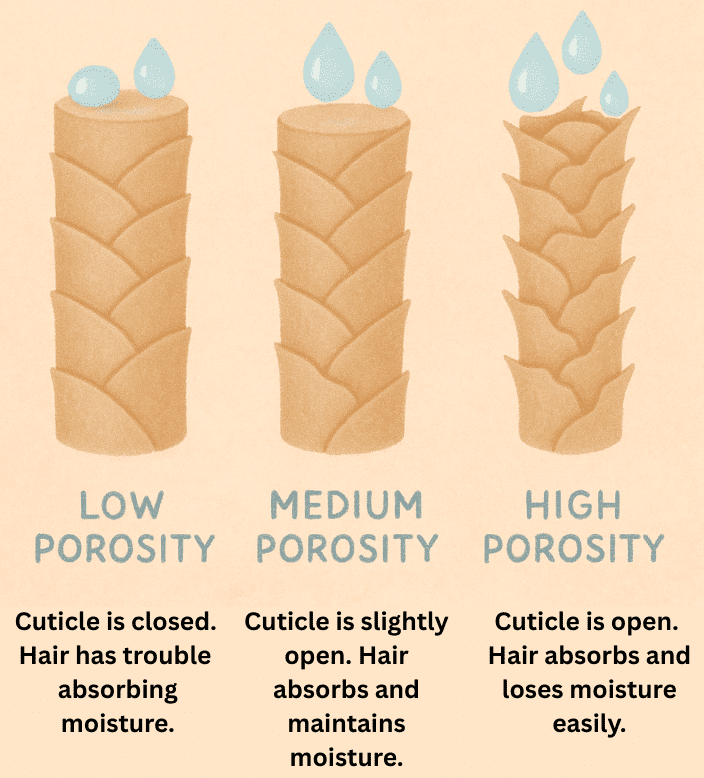
How to Tell if You Have Low Porosity Hair
Are you wondering if your hair has low porosity? Here are some easy tests you can try:
🔹 The Water Test – Take a clean hair strand and drop it into a glass of water. If it floats for a while, you probably have low porosity hair.
🔹 The Spray Test – Mist a small section of your hair with water. If the water beads up on the surface instead of soaking in, your hair is likely low porosity.
🔹 The Product Test – Put a little hair oil or leave-in conditioner on your hair. If it just sits there without being absorbed, that’s another indicator of low porosity.
The Challenges of Low Porosity Hair
1. Trouble Absorbing Moisture
Low porosity hair has tightly packed cuticles, which makes it difficult for moisture to penetrate. As a result, water, conditioners, and oils don’t absorb well, leading to dryness.
2. Concerns About Product Buildup
Since low porosity hair struggles to absorb products, they often remain on the surface, leading to buildup. This can make your hair feel greasy, stiff, or heavy instead of soft and hydrated.
3. Dryness and Reduced Elasticity
Without sufficient moisture, low porosity hair can become dry and brittle. It may also lack elasticity, meaning it doesn’t stretch much before breaking. Therefore, it’s crucial to find effective ways to hydrate and nourish your hair.
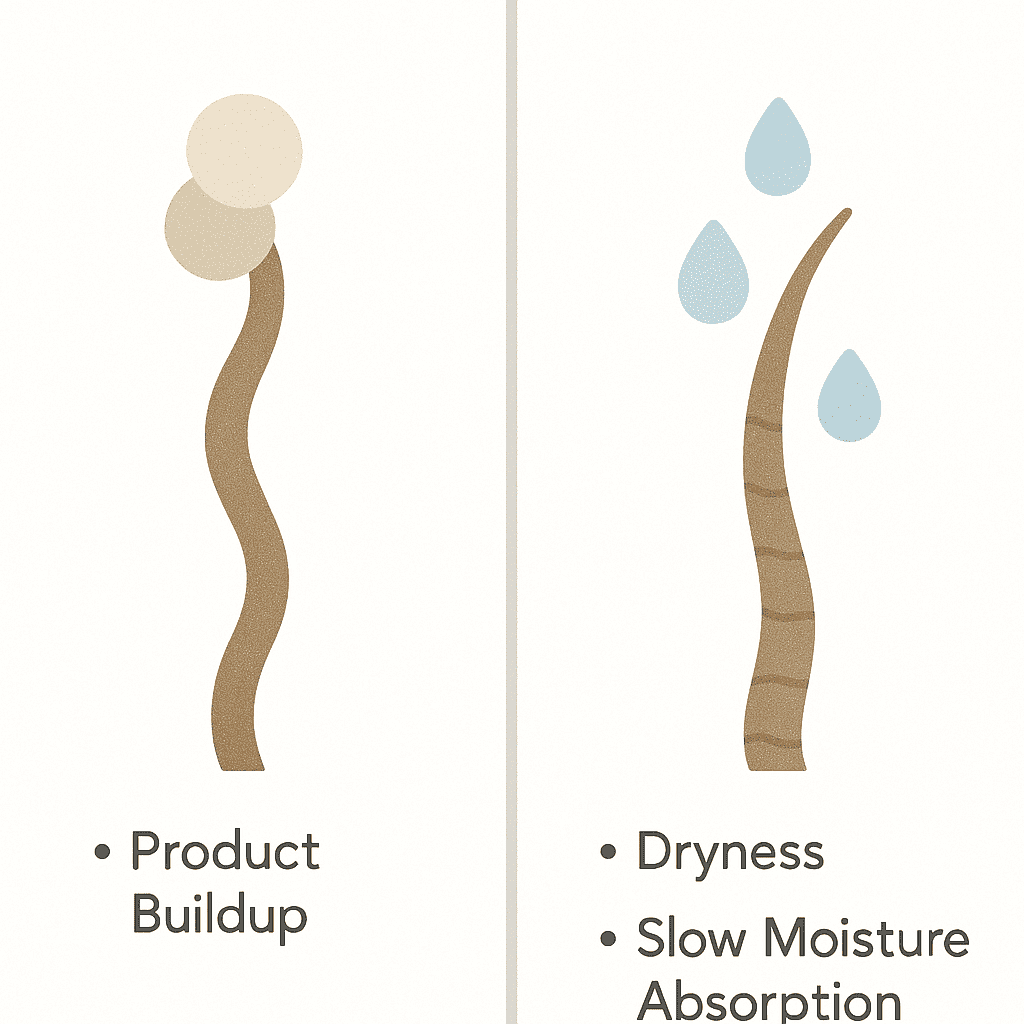
Hair Care Routine for Low Porosity Hair
Why a Customized Routine Matters
Taking care of low porosity hair requires a different approach than other hair types. Because moisture doesn’t easily penetrate the hair shaft, a standard routine may not be effective. Instead, you need a specialized hair care routine that aims to:
✔️ Open the hair cuticles for improved moisture absorption.
✔️ Prevent product buildup.
✔️ Keep your hair soft, strong, and hydrated for longer.
Follow this step-by-step guide to develop the best routine for your low porosity hair!
Step-by-Step Guide to an Effective Hair Care Regimen
1. Cleansing and Shampooing
If you have low porosity hair, you might notice it tends to accumulate buildup from oils, conditioners, and styling products. That’s why selecting the right shampoo is crucial.
✔️ Use a clarifying shampoo once a month to eliminate buildup.
✔️ Opt for sulfate-free shampoos that cleanse without stripping your hair of moisture.
✔️ Wash your hair with warm water to open the cuticles and allow moisture to penetrate.
💡 Tip: Be careful not to use too much shampoo, as it can remove your hair’s natural oils.
2. Deep Conditioning Techniques
Deep conditioning is essential for low porosity hair! Since this hair type doesn’t absorb moisture easily, it’s important to use the right approach:
✔️ Apply heat – After putting on a deep conditioner, sit under a steamer, use a hooded dryer, or wrap your hair in a warm towel to help the conditioner soak in.
✔️ Choose lightweight, water-based conditioners that won’t just sit on your hair.
✔️ Steer clear of heavy creams that can lead to buildup.
💡 Tip: Look for conditioners that contain honey, aloe vera, or glycerin, as these ingredients help draw moisture into your hair.
3. Moisturizing and Sealing Methods
Because moisture has a hard time penetrating low porosity hair, you need an effective strategy to hydrate it.
✔️ Apply leave-in conditioner while your hair is still damp to help lock in moisture.
✔️ Try the LCO (Liquid-Cream-Oil) method instead of the LOC method. This involves:
• L (Liquid): Start with a water-based leave-in conditioner.
• C (Cream): Use a lightweight cream for added moisture.
• O (Oil): Finish with a light oil, such as argan oil or grapeseed oil, to seal in the moisture.
💡 Tip: Avoid using heavy oils like coconut oil, as they may sit on top of your hair rather than being absorbed.
4. Tips for Keeping Your Hair Hydrated
Styling low porosity hair correctly can help maintain its moisture for a longer time.
✔️ Use a small amount of styling products to avoid buildup.
✔️ Opt for protective styles like braids or twists to help lock in moisture.
✔️ Sleep with a satin or silk bonnet or pillowcase to reduce dryness.
💡 Tip: Be cautious with protein in your products, as too much can make low porosity hair feel stiff and brittle.
